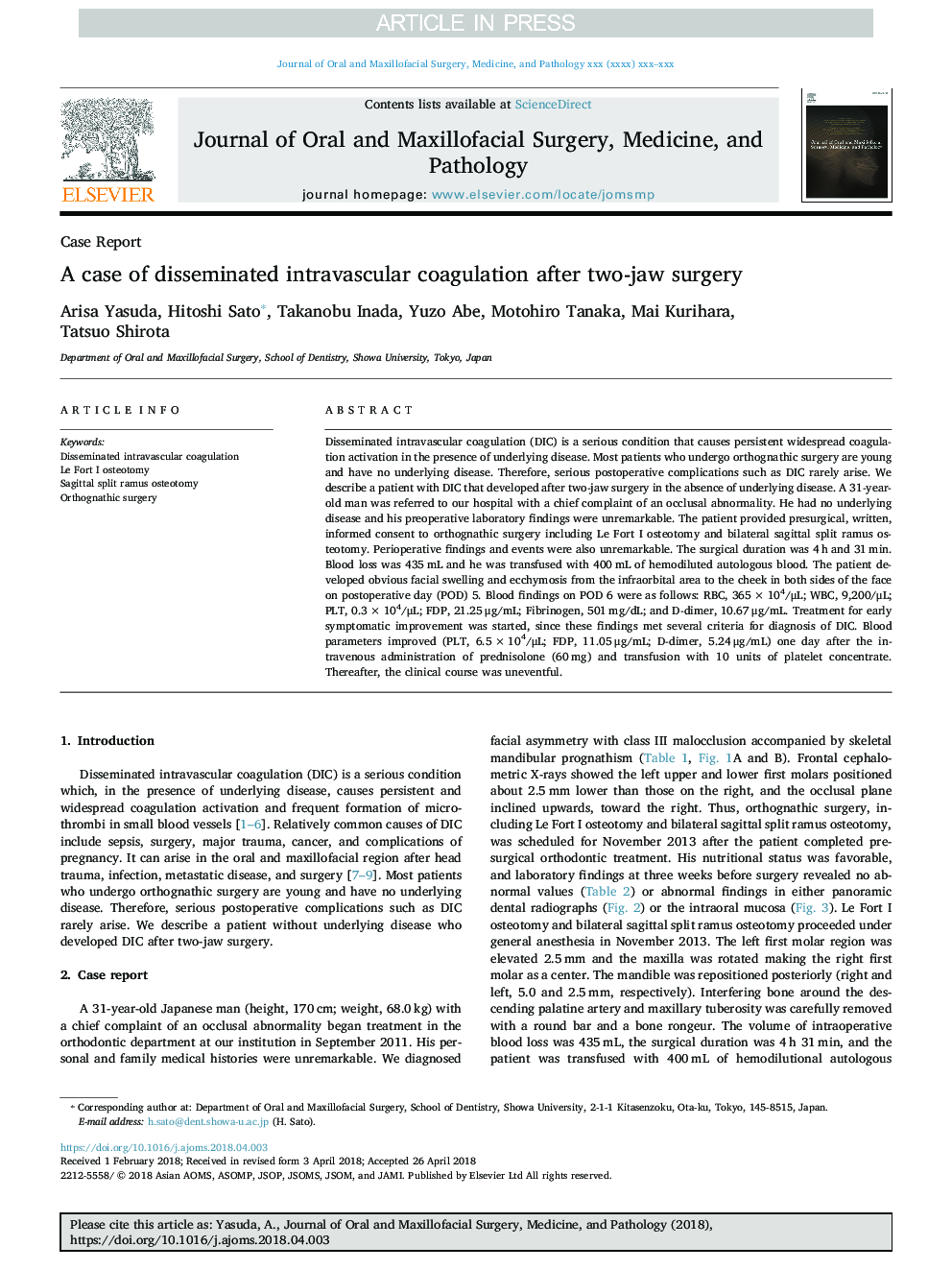| Article ID | Journal | Published Year | Pages | File Type |
|---|---|---|---|---|
| 8963630 | Journal of Oral and Maxillofacial Surgery, Medicine, and Pathology | 2018 | 5 Pages |
Abstract
Disseminated intravascular coagulation (DIC) is a serious condition that causes persistent widespread coagulation activation in the presence of underlying disease. Most patients who undergo orthognathic surgery are young and have no underlying disease. Therefore, serious postoperative complications such as DIC rarely arise. We describe a patient with DIC that developed after two-jaw surgery in the absence of underlying disease. A 31-year-old man was referred to our hospital with a chief complaint of an occlusal abnormality. He had no underlying disease and his preoperative laboratory findings were unremarkable. The patient provided presurgical, written, informed consent to orthognathic surgery including Le Fort I osteotomy and bilateral sagittal split ramus osteotomy. Perioperative findings and events were also unremarkable. The surgical duration was 4â¯h and 31â¯min. Blood loss was 435â¯mL and he was transfused with 400â¯mL of hemodiluted autologous blood. The patient developed obvious facial swelling and ecchymosis from the infraorbital area to the cheek in both sides of the face on postoperative day (POD) 5. Blood findings on POD 6 were as follows: RBC, 365â¯Ãâ¯104/μL; WBC, 9,200/μL; PLT, 0.3â¯Ãâ¯104/μL; FDP, 21.25â¯Î¼g/mL; Fibrinogen, 501â¯mg/dL; and D-dimer, 10.67â¯Î¼g/mL. Treatment for early symptomatic improvement was started, since these findings met several criteria for diagnosis of DIC. Blood parameters improved (PLT, 6.5â¯Ãâ¯104/μL; FDP, 11.05â¯Î¼g/mL; D-dimer, 5.24â¯Î¼g/mL) one day after the intravenous administration of prednisolone (60â¯mg) and transfusion with 10 units of platelet concentrate. Thereafter, the clinical course was uneventful.
Keywords
Related Topics
Health Sciences
Medicine and Dentistry
Dentistry, Oral Surgery and Medicine
Authors
Arisa Yasuda, Hitoshi Sato, Takanobu Inada, Yuzo Abe, Motohiro Tanaka, Mai Kurihara, Tatsuo Shirota,
